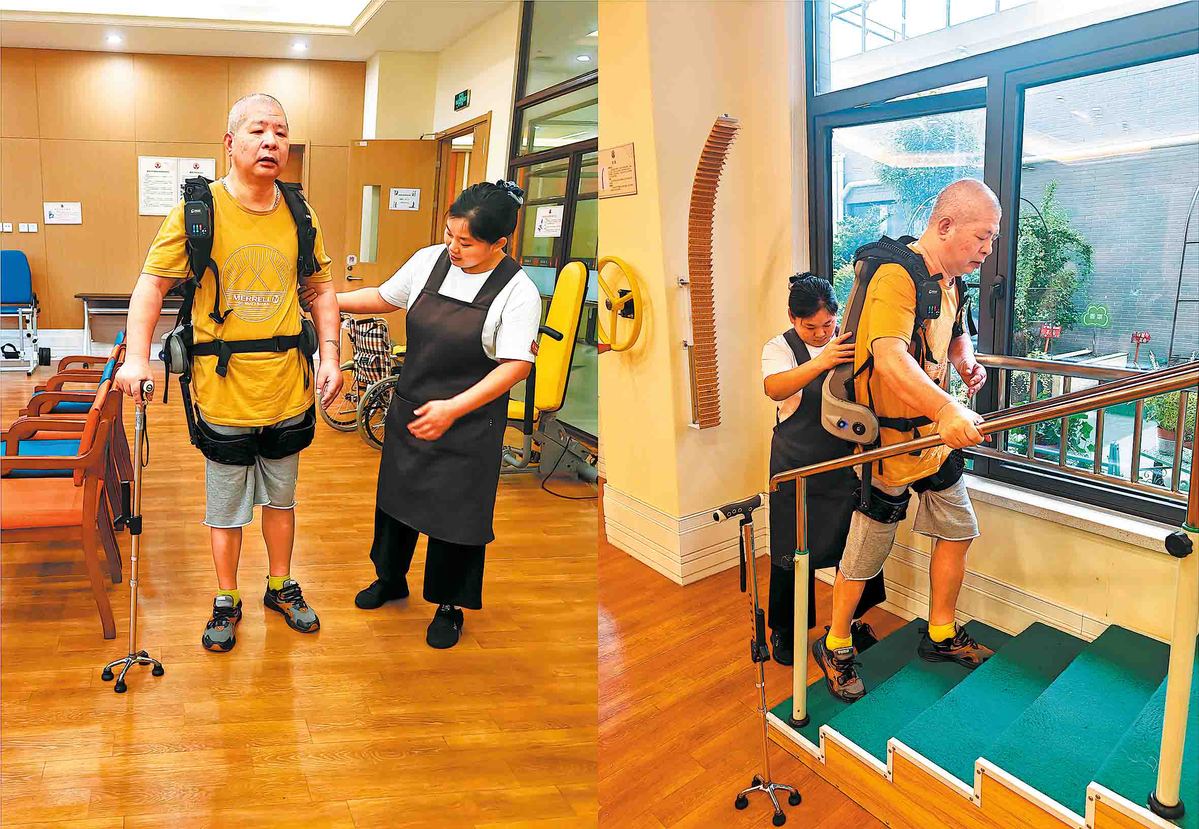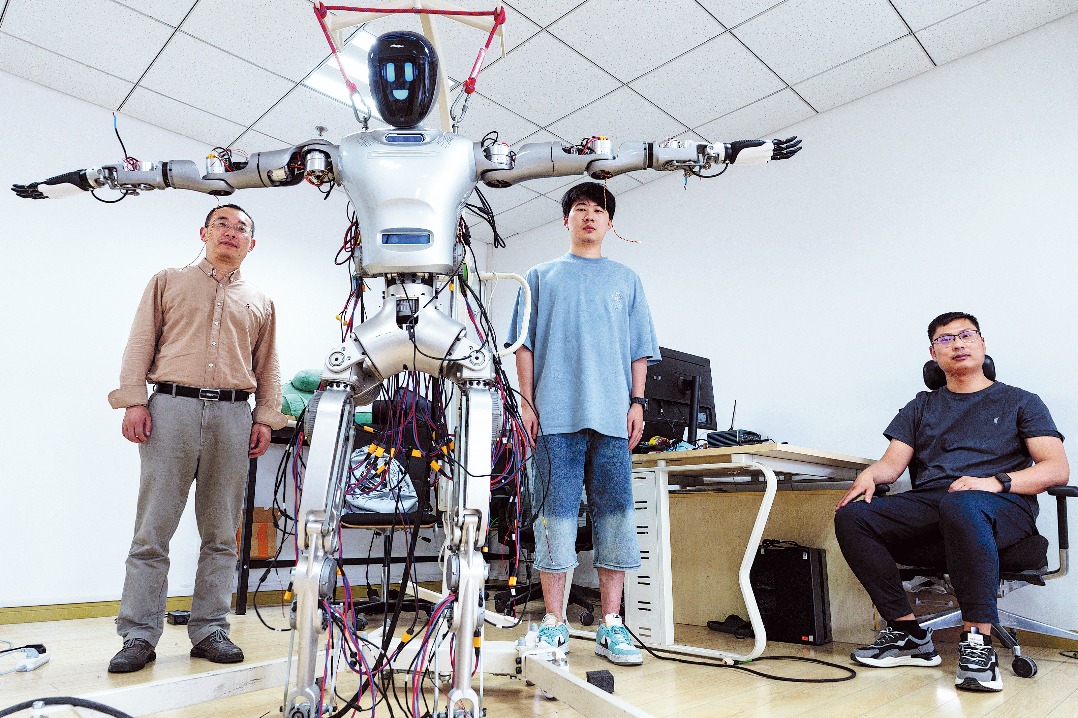'Sympathetic' humanoids at vanguard of robot solutions to elderly care
Intelligent self-driving wheelchairs, automated exoskeletons will assist aging population, experts say


Emotional interactions
The Guanghua No 1 humanoid robot, developed by Fudan University's Academy for Engineering and Technology, made its public debut in July 2024. Standing 165 centimeters and weighing 62 kilograms, the robot is capable of walking upright and displaying facial expressions. Its developers describe it as "a robot with human-like emotions that can complete flexible and delicate operations".
One of the robot's key features is its ability to perceive and respond to users' emotions. It has an animated "cartoon-like" face that so far can express 21 different emotions, including joy, excitement, anger and sorrow.
To achieve this level of emotional intelligence and interactivity, a multidisciplinary team — drawn from mechanics, biology, engineering, computing, and big data — has spent over three years developing the robot's response system.
"By integrating brain-inspired dynamics and dopamine-like reward mechanisms, along with multi-level coordinated reinforcement algorithms, the robot's perception and behaviors have been refined to be more human-like and subtle, enabling multi-modal emotion generation," Liu said.
In addition to emotional engagement, the robot's physical interactions with elderly individuals must be gentle and precise.
Equipped with dozens of variably geared intelligent joints and a hierarchical generative body-brain model, the robot is expected to perform a wide range of actions in the future, the researchers said. It will also have real-time adaptability to cater to various needs, such as lifting objects of different textures and sizes.
Compared with robots that perform general household duties, caregiver robots, which will have intensive interaction with humans, require a higher level of safety and precision.
"The daily routine of such a robot includes helping the elderly get up from a bed and supporting them to get to the bathroom," Liu said. "This is very different from a housework robot that sweeps the floor and folds clothes most of the time, which is usually not done in the presence of humans.
"An extreme example is the case of a robot colliding with an elderly user; it must execute protective actions promptly," he said.
The ultimate goal of the robot, which unlike a human carer will never lose its temper, is to comprehend users' intentions, and generalize its capability to deal with complex scenarios. The robot will need to be charged once a day, like a mobile phone.
"After entering a family environment, the robot observes the individuals' behaviors and habits and optimizes its actions and workflow accordingly," Liu said. "The way people clean the floor may differ, and there are vastly different cooking styles and taste preferences. The robot must continuously learn autonomously to adapt to each elderly person and household."
Several domestic and foreign teams are developing similar caregiver robots for the elderly, a recognition of the urgent need for such solutions, the Fudan team said. China is currently at the forefront of global research and development in this field, they added.
Guanghua No 1 humanoid robot currently supports six languages: Chinese, English, French, German, Spanish, and Russian. Companies in countries, including Singapore, Japan and Russia, all of which have aging populations, have expressed interest in the robot, the research team said, adding the issue is a shared global challenge.
After mass production, the retail price of the robot is expected to be between 100,000 yuan ($13,928) and 200,000 yuan, Liu said.























